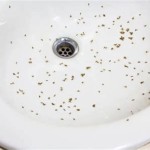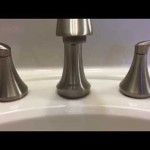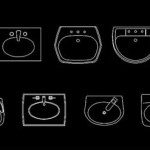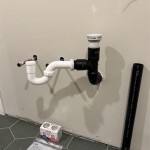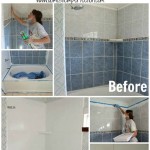How To Get Rid Of Earthworms In Your Bathroom
The appearance of earthworms in a bathroom is a perplexing and often unsettling experience. Earthworms, typically associated with soil and gardens, are not naturally drawn to the indoor environment of a bathroom. Their presence indicates an underlying issue that needs to be addressed, ranging from plumbing problems to structural vulnerabilities that allow entry. Successfully eliminating these unwanted guests requires a systematic approach involving identification of the entry point, addressing the root cause that attracts them, and implementing preventive measures to ensure they do not return.
Understanding the biology and behavior of earthworms is crucial in developing an effective eradication strategy. Earthworms are annelids, segmented worms that thrive in moist environments. They are detritivores, meaning they feed on decaying organic matter. Their presence indoors suggests a source of moisture and organic material that is attracting them. Common entry points include cracks in the foundation, gaps around pipes, and drainage systems. They may also be present due to a sewage leak or a build-up of organic debris in the plumbing.
The problem of earthworms in a bathroom is not just an aesthetic concern. They can also introduce bacteria and other microorganisms into the environment, potentially posing a health risk. Furthermore, their presence can indicate a more significant issue, such as a leaking pipe or structural damage to the building. Ignoring the problem can lead to further degradation and more costly repairs in the long run.
Identifying the Source of the Infestation
The first step in eliminating earthworms from a bathroom is to identify the source of the infestation. This involves a thorough inspection of the bathroom and surrounding areas to determine how the worms are entering and what is attracting them. Key areas to examine include:
Plumbing Fixtures: Check around the base of the toilet, sink, and shower for any signs of leaks. Even small leaks can create the moist environment that earthworms need to survive. Look for water stains, dampness, or standing water. Pay close attention to the caulking around these fixtures, as cracks or gaps can provide entry points for worms.
Drainage Systems: Inspect the drains in the sink, shower, and bathtub. Worms can enter through these drains if there is a blockage or a build-up of organic matter. Remove the drain covers and use a flashlight to examine the inside of the drainpipes. Look for any signs of worms or their castings (worm excrement). Consider using a drain snake or plunger to clear any potential blockages.
Floor and Walls: Examine the floor and walls of the bathroom for any cracks or openings. Earthworms can squeeze through surprisingly small spaces. Pay particular attention to the area where the floor meets the walls and around any pipes that enter the room. Check for any signs of dampness or discoloration, which could indicate a leak behind the wall.
Foundation and Exterior Walls: In some cases, the source of the infestation may be outside the bathroom. Check the foundation of the building for any cracks or gaps. Also, inspect the exterior walls for any openings around pipes, vents, or windows. Earthworms can enter the building through these openings and then migrate to the bathroom.
Once the source of the infestation has been identified, it is important to address the underlying cause. This may involve repairing leaks, sealing cracks, clearing drains, or addressing other structural issues.
Effective Methods for Eliminating Earthworms
Once the source of the infestation is identified and addressed, the next step is to eliminate the earthworms that are already present in the bathroom. Several methods can be used to achieve this, ranging from simple cleaning techniques to more specialized treatments.
Manual Removal: The most straightforward method is to manually remove the earthworms as they are found. This can be done by picking them up and placing them outside or flushing them down the toilet. While this method is effective for removing individual worms, it does not address the underlying cause of the infestation and is unlikely to eliminate the problem completely. It is important to wear gloves when handling earthworms, as they can carry bacteria and other microorganisms.
Cleaning and Disinfection: Thoroughly cleaning and disinfecting the bathroom can help to eliminate the food source that is attracting the earthworms. This includes cleaning all surfaces with a disinfectant cleaner, paying particular attention to areas where worms have been seen. Cleaning the drains with a drain cleaner or a solution of baking soda and vinegar can also help to remove organic matter and eliminate any potential food sources. Regular cleaning is essential to prevent future infestations.
Diatomaceous Earth: Diatomaceous earth (DE) is a natural powder made from the fossilized remains of diatoms, a type of algae. It is a highly effective insecticide that works by dehydrating insects and other invertebrates. Sprinkle a thin layer of DE around the areas where earthworms have been seen, such as around the base of the toilet, sink, and shower. The earthworms will crawl through the DE and become dehydrated, eventually dying. Be sure to use food-grade DE, as other types of DE can be harmful to humans and pets. Diatomaceous earth is most effective in dry conditions, so it may need to be reapplied after cleaning or in humid environments.
Salt: Salt is another natural substance that can be used to kill earthworms. Sprinkle salt around the areas where worms have been seen. The salt will draw moisture out of the worms, causing them to dehydrate and die. However, salt can be corrosive and may damage certain surfaces, so it should be used with caution. Avoid using salt on metal surfaces or on surfaces that are prone to staining.
Vinegar: Vinegar is an acidic solution that can be used to kill earthworms. Spray vinegar directly onto the worms or pour it into the drains. The vinegar will kill the worms on contact. However, vinegar is also acidic and may damage certain surfaces, so it should be used with caution. Test the vinegar on an inconspicuous area before applying it to a larger surface.
Professional Pest Control: In cases of severe infestation, it may be necessary to call a professional pest control company. Pest control professionals have specialized equipment and knowledge to effectively eliminate earthworms and prevent future infestations. They can also identify and address any underlying issues that are contributing to the problem, such as leaks or structural damage.
Preventing Future Infestations
Once the earthworms have been eliminated from the bathroom, it is important to take steps to prevent future infestations. This involves addressing the underlying causes of the infestation and implementing preventive measures to keep the worms from returning. Key preventive measures include:
Repairing Leaks: Regularly inspect plumbing fixtures for leaks and repair them promptly. Even small leaks can create the moist environment that earthworms need to survive. Check the caulking around the toilet, sink, and shower, and repair any cracks or gaps. Replace worn-out washers and gaskets in faucets and showerheads.
Sealing Cracks and Openings: Seal any cracks or openings in the floor, walls, and foundation of the bathroom. Use caulk, sealant, or expanding foam to fill in any gaps. Pay particular attention to the area where the floor meets the walls and around any pipes that enter the room. Sealing these openings will prevent earthworms from entering the bathroom.
Maintaining Cleanliness: Keep the bathroom clean and dry. Regularly clean all surfaces with a disinfectant cleaner. Pay particular attention to areas where moisture tends to accumulate, such as around the sink and shower. Clean the drains regularly to remove any build-up of organic matter. Use a drain cleaner or a solution of baking soda and vinegar to keep the drains clear.
Controlling Humidity: Earthworms thrive in humid environments, so it is important to control the humidity levels in the bathroom. Use a dehumidifier to reduce the humidity, especially during the summer months. Ensure that the bathroom is well-ventilated by opening windows or using a exhaust fan after showering or bathing.
Landscaping Considerations: Improving drainage around the foundation of the building can help to reduce the likelihood of earthworms entering the bathroom. Ensure that the ground slopes away from the foundation and that there are no areas where water tends to pool. Consider installing a French drain to divert water away from the foundation. Keep vegetation trimmed back from the foundation to allow for better air circulation.
Regular Inspections: Conduct regular inspections of the bathroom and surrounding areas to identify any potential problems early on. Look for signs of leaks, cracks, or dampness. Address any issues promptly to prevent a full-blown infestation. Regular inspections will help to maintain a healthy and pest-free environment in the bathroom.
By following these steps, it is possible to effectively eliminate earthworms from a bathroom and prevent future infestations. Addressing the underlying causes of the infestation and implementing preventive measures are essential to ensure that the problem does not recur.

How To Get Rid Of Earthworms In Bathroom Follow These Simple Steps

How To Get Rid Of Worms In The Bathroom And Drains

How To Get Rid Of Earthworms In Your Home

How To Get Rid Of Earthworms In The Bathroom ستورم Storm

How To Get Rid Of Earthworms In The Bathroom ستورم Storm

How To Get Rid Of Earthworms In The Bathroom ستورم Storm

How To Get Rid Of Black Worms In Bathroom 4 Effective Ways

How To Get Rid Of Worms In The Toilet Quick And Simple Tips

How To Get Rid Of Worms In The Toilet Quick And Simple Tips

Are You Spotting Worms In Your Toilet Vista Ca Here S What Going On 1st Choice Plumbing Flood Restoration
Related Posts
